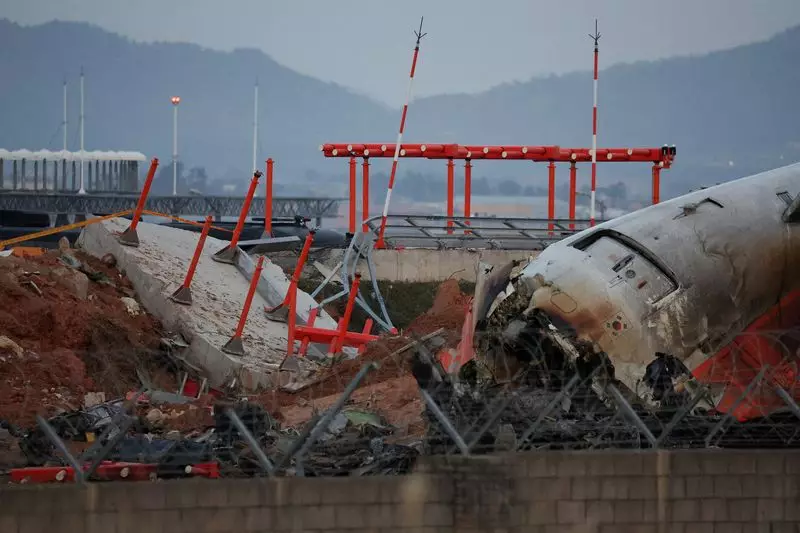The recent crash of Jeju Air flight 7C2216 has marked a devastating chapter in South Korean aviation history, resulting in the loss of 179 lives and becoming the deadliest air disaster on the nation’s soil. As the nation grapples with this calamity, the South Korean transport ministry has announced that a preliminary report will be made available, shedding light on the factors contributing to this tragedy. Set to be released by Monday, the report will focus on several potential culprits including bird strikes and the design of the landing pathways.
One of the most concerning aspects under investigation is the role that bird strikes played during the flight’s approach to Muan International Airport. Eyewitness accounts and early communications from the cockpit suggest that the pilots were aware of birds in the vicinity, leading them to declare a mayday just seconds before the disaster struck. Reportedly, just moments before the aircraft made its final descent, discussion transpired regarding birds flying dangerously near the Boeing 737-800, highlighting the immediate risk they posed. This issue raises vital questions regarding the safety protocols at airports prone to such wildlife interactions.
Equally significant are the avenues of data analysis currently underway to ascertain the exact sequence of events leading up to the crash. Investigators are faced with the challenging task of piecing together information from flight data and cockpit voice recorders, which unfortunately ceased recording moments before the impact. Communication logs with air traffic control are also under scrutiny, with the aim of developing a coherent narrative from fragmented information. Preliminary findings indicate that the last recorded transmission was just minutes prior to the catastrophic impact at 9:02:57 a.m., leading to significant interest in the information that could have been gathered in those lost moments.
In addition to technical data, physical evidence collected from the crash site has played a crucial role in the ongoing investigation. Notably, duck feathers and blood were discovered in both of the aircraft’s engines, reinforcing the belief that a bird strike occurred. However, questions linger about the specific mechanics of the accident, particularly regarding the plane’s collision with the concrete embankment that housed navigation antennas. Such structural elements may have exacerbated the destruction, suggesting a need for reevaluation of safety measures at the airport.
The South Korean government has extended its cooperative hands to international organizations including the International Civil Aviation Organization, as well as aviation authorities from the United States, France, and Thailand. An important aspect of this cooperative engagement lies in establishing measures designed to prevent future tragedies of this magnitude. Learning from the investigation, there is a pressing necessity for both local and international aviation regulators to evaluate and enhance safety protocols, especially in high-risk areas.
As the investigation continues, the consequences of the Jeju Air flight 7C2216 tragedy ripple throughout South Korea and beyond. It serves as a solemn reminder of the fragility of life and the complexities surrounding aviation safety. The findings from the forthcoming preliminary report may very well shape how air travel is approached in the future, leading to better safeguards for passengers and crew alike, ensuring that similar disasters do not claim lives again.

